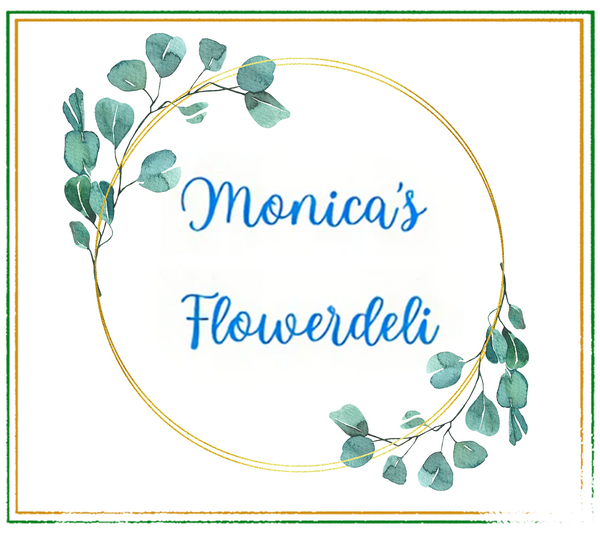Diwali & Puja Décor Ideas with Fresh Flowers
Share
Diwali, the Festival of Lights, and the Puja ceremonies leading up to it, are traditions deeply rooted in beauty, fragrance, and purity. In Indian culture, fresh flowers are not merely decorations; they are an essential offering (pushpa), symbolizing devotion, purity, and the transient beauty of life. Their vibrant colours and intoxicating scents elevate the spiritual ambiance of your home, welcoming prosperity and divine blessings.
For those in Bangalore, leveraging the bounty of the autumn and early winter bloom season is key to creating stunning, authentic, and long-lasting décor. This guide explores the must-try trends and timeless ideas for integrating fresh flowers into your Diwali and Puja celebrations in 2025.
1. The Essential Blooms: Classic Flowers for Divine Offerings
While trends come and go, certain flowers remain non-negotiable for their sacred symbolism and vibrant colours, which are perfectly in season during the Diwali period (October-November).
· Marigold (Genda): The undisputed king of Diwali decor. Its radiant yellow and deep orange hues signify the sun's energy, prosperity, and joy. Marigolds are robust, readily available, and their pungent scent is believed to ward off negative energy.
Décor Use: Strings of Marigold garlands (torans) are essential for doorways, and loose petals are crucial for rangoli borders and floating arrangements.
· Rose (Gulab): Symbolizing beauty, love, and spiritual attainment, the rose is perfect for decorating the Puja altar. Red and pink varieties are favoured for their rich, festive colour.
Décor Use: Use individual petals for aarti thalis and full blooms as main offerings near the deities.
· Lotus (Kamal): The Lotus is highly revered, representing purity, creation, and wealth (as the seat of Goddess Lakshmi). While rare, even single blooms add immense sanctity to the main Lakshmi Puja.
· Chrysanthemum (Sevanthi): These hardy, cheerful blooms are in full season during autumn. Available in whites, yellows, and purples, they add volume and a delicate texture to larger arrangements.
Décor Use: Ideal for creating dense, layered backgrounds for the mandap or for filling large vases.
Sourcing Tip: To ensure your Puja receives only the purest and freshest offerings, always look for flowers that are harvested on the day of delivery. Monica's Flowerdeli ensures a direct supply of these seasonal essentials, providing the freshest Genda and Roses for your ceremonies.
2. Elevated Altar & Mandap Décor Trends
The mandap (or home altar) is the focal point of the celebrations. In 2025, décor moves towards more curated and artistic backdrops.
The Floral Waterfall (Parda):
Instead of a solid cloth backdrop, this trend uses strings of flowers, mainly Marigold and Tuberose (Rajnigandha), hung densely to create a stunning, fragrant curtain. This technique adds depth and a heavenly scent to the Puja area. The subtle white of the Tuberose against the orange Marigold provides a sophisticated contrast, creating a festive yet calming backdrop.
Artistic Urns and Pedestals:
Moving beyond simple vases, the trend involves decorating antique brass or copper vessels. Tall arrangements of long-stemmed flowers like Gladioli or Orchids are placed on either side of the mandap, drawing the eye upward and giving the deities a truly grand setting. Using warm-toned flowers that complement the metal (like yellow and orange) maintains the traditional aesthetic.
The Sacred Symmetry:
Modern Puja decoration emphasizes symmetry. Everything is balanced: two identical floral arrangements, two matching oil lamps, and perfectly aligned garlands. This creates a sense of order and peace, reflecting the spiritual intent of the ceremony.
3. Innovative Floral Lighting and Floating Décor
Diwali is about light (Deepavali), and flowers can beautifully enhance the glow of your diyas (oil lamps) and candles.
Floral Urli Arrangements:
The urli (a wide, shallow bowl) filled with water is a classic element, but the modern update involves creating sophisticated floral patterns.
1. Water Base: Fill the urli with fresh water.
2. Petal Layer: Spread a base of bright Rose and Marigold petals.
3. Accent Blooms: Float full, small flowers like Carnations or Chrysanthemums.
4. The Light: Place small, decorated diyas or floating candles amongst the petals. The reflection of the light off the water and the brass urli creates a mesmerising glow.
Illuminated Garlands:
Traditional Marigold garlands are interwoven with tiny, warm-white LED string lights. Hanging these illuminated garlands along window sills, stair railings, and around indoor plants makes the entire house sparkle and adds a touch of contemporary magic to the classic flower décor.
Execution Tip: For intricate floating arrangements and illuminated garlands, the structural integrity of the flowers is crucial. Monica's Flowerdeli often advises clients on the best water-resistant flowers and provides garlands that are tied using traditional methods for maximum longevity throughout the festive week.
4. Festive Floral Rangolis and Entrance Décor
Your home's entrance sets the tone for the entire festival, welcoming guests and prosperity (Goddess Lakshmi).
· The Flower Rangoli: Instead of coloured powder, create your rangoli entirely from flower petals. Use bright Marigold (yellow/orange), Rose (red/pink), and Lotus leaves (green) to outline geometric or devotional patterns. The natural fragrance is a beautiful bonus.
· Door Torans: The Marigold and mango leaf toran remains timeless. For an upgrade, incorporate fragrant Jasmine strings woven into the Marigold. The Jasmine scent is particularly potent and welcoming, guiding guests into your home.
· Vertical Vases: Use tall, slender vases filled with seasonal flowers like Tube Roses or Lilies near the main door. Their height and striking white colour signify peace and auspiciousness, creating a vertical accent that draws attention.
Final Word on Festive Freshness
Diwali and Puja celebrations are often multi-day affairs. To ensure your floral décor remains vibrant, fresh, and fragrant from the start of the ceremony to the final day of festivities, choose a supplier known for unparalleled freshness and quality. By selecting the best seasonal blooms, you not only honour tradition but also create a spectacularly vibrant and fragrant home, perfectly setting the stage for a blessed and beautiful Diwali.
